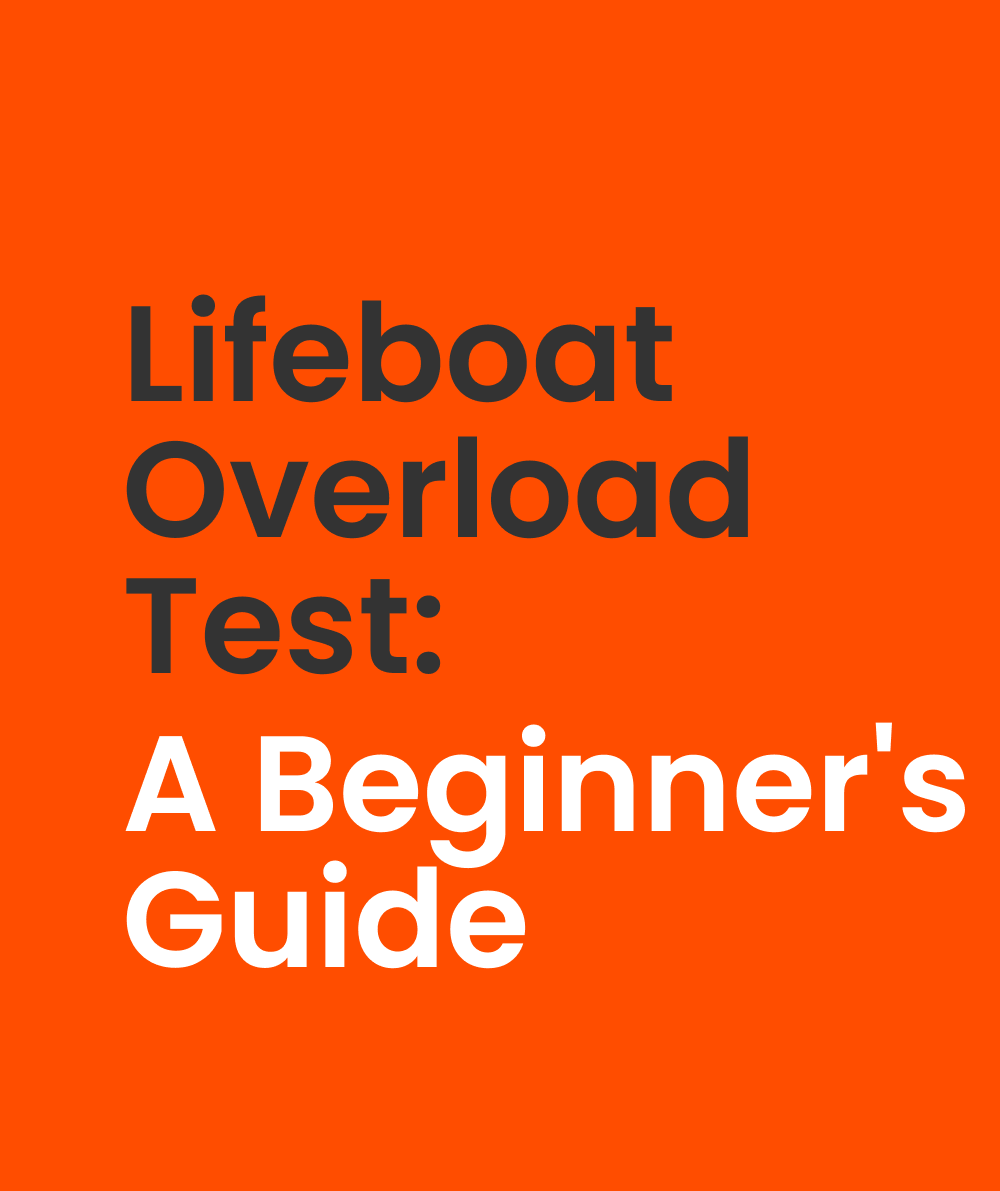In the maritime industry, the safety of lifeboats is paramount, and one crucial evaluation they undergo is the Lifeboat Overload Test. This test assesses the structural integrity of davit-launched lifeboats under various loading conditions, ensuring their capability to withstand emergency situations at sea.
The procedure involves several steps, starting with placing the unloaded lifeboat on blocks or suspending it from lifting hooks. Measurements are taken to assess the keel sag, ensuring that the boat’s structural baseline remains within acceptable limits.
Subsequently, the lifeboat is loaded with weights strategically distributed to simulate its fully equipped state with the maximum number of occupants for the specific type of ship. This step helps evaluate the lifeboat’s stability and structural response under normal operating conditions.
The examination becomes more rigorous as additional weights are incrementally added, reaching 25%, 50%, 75%, and 100% more than the fully equipped and loaded condition. For metallic lifeboats, the test stops at a 25% overload. The weights used to represent people are distributed proportionally to the lifeboat’s typical loading, excluding a specific requirement for their placement 300 mm above the seat pan. It’s important to note that using water to load the lifeboat is not accepted, as it does not provide an accurate distribution of weight.
During each incremental overload, precise measurements are taken, including the deflection of the keel amidships, changes in length between the top of the stem and stern posts, alterations in breadth over the gunwale at specific points, and variations in depth from gunwale to keel.
The criteria for success in these measurements are stringent. For instance, at a 25% overload, the keel deflection and change in breadth should not exceed 1/400 of the lifeboat’s length. Results at 100% overload, if conducted, should align proportionally with those obtained at 25% overload.
Once the overload testing is completed, the weights are removed, and the lifeboat’s dimensions are rechecked. Any significant residual deflection or permanent damage is documented. In the case of lifeboats constructed with Glass Reinforced Plastic (GRP), measurements are taken after a sufficient period (approximately 18 hours) to allow the GRP to regain its original form.
In essence, the Lifeboat Overload Test is a meticulous examination ensuring that lifeboats can withstand varying degrees of stress and loading conditions. By adhering to these standards, maritime authorities and ship operators can be confident in the lifeboats’ ability to function reliably during emergencies, contributing to the overall safety of maritime operations.
Whether you’re in need of vessel inspections or essential supplies in the UAE and the Middle East, look no further – we’ve got you covered! With a robust 13-year background in the marine industry and approvals from major classes and flags, we guarantee top-notch Life Saving Appliance (LSA), Fire Fighting Appliance (FFA), and other inspections. Our commitment to excellence extends to offering competitive prices, ensuring you get the best value for your maritime needs. For a seamless experience and to discover our competitive rates, feel free to reach out with your inquiries. Your satisfaction is our priority! 🌊
#lifeboat #loadtesting

